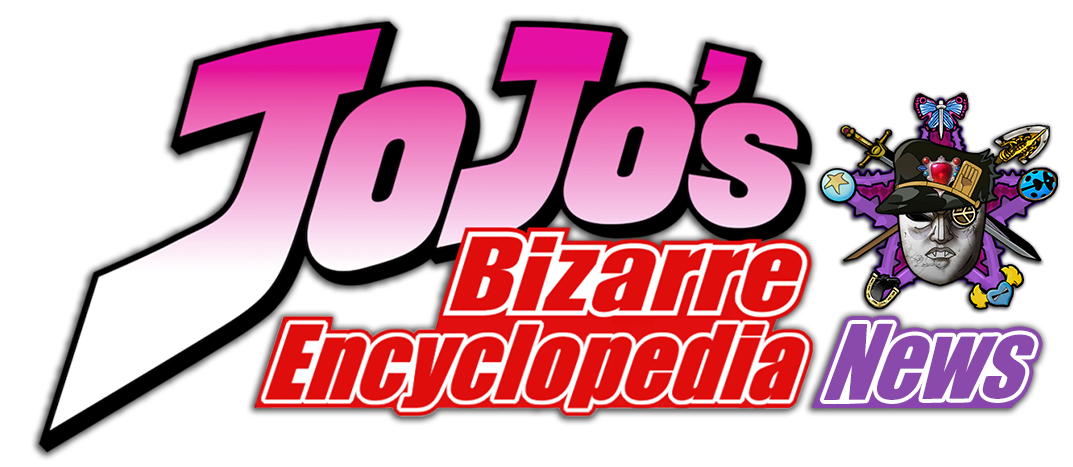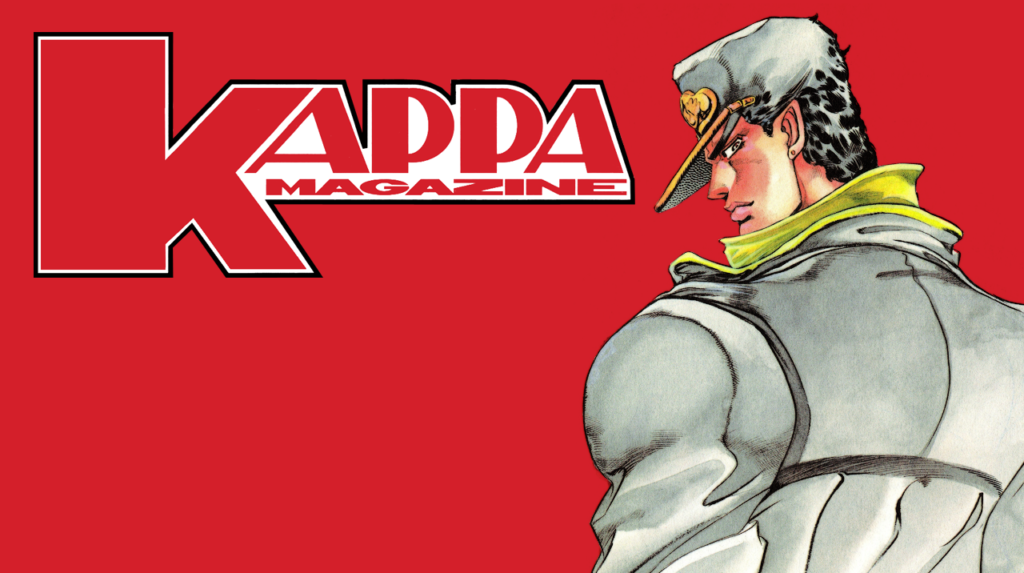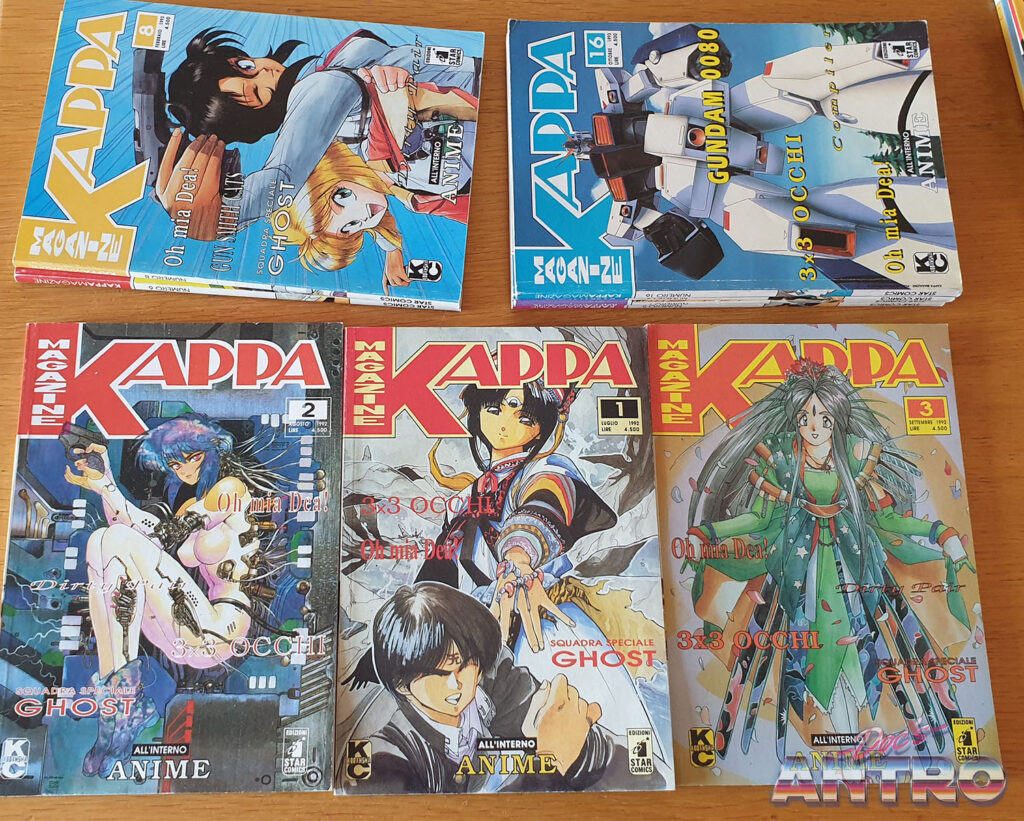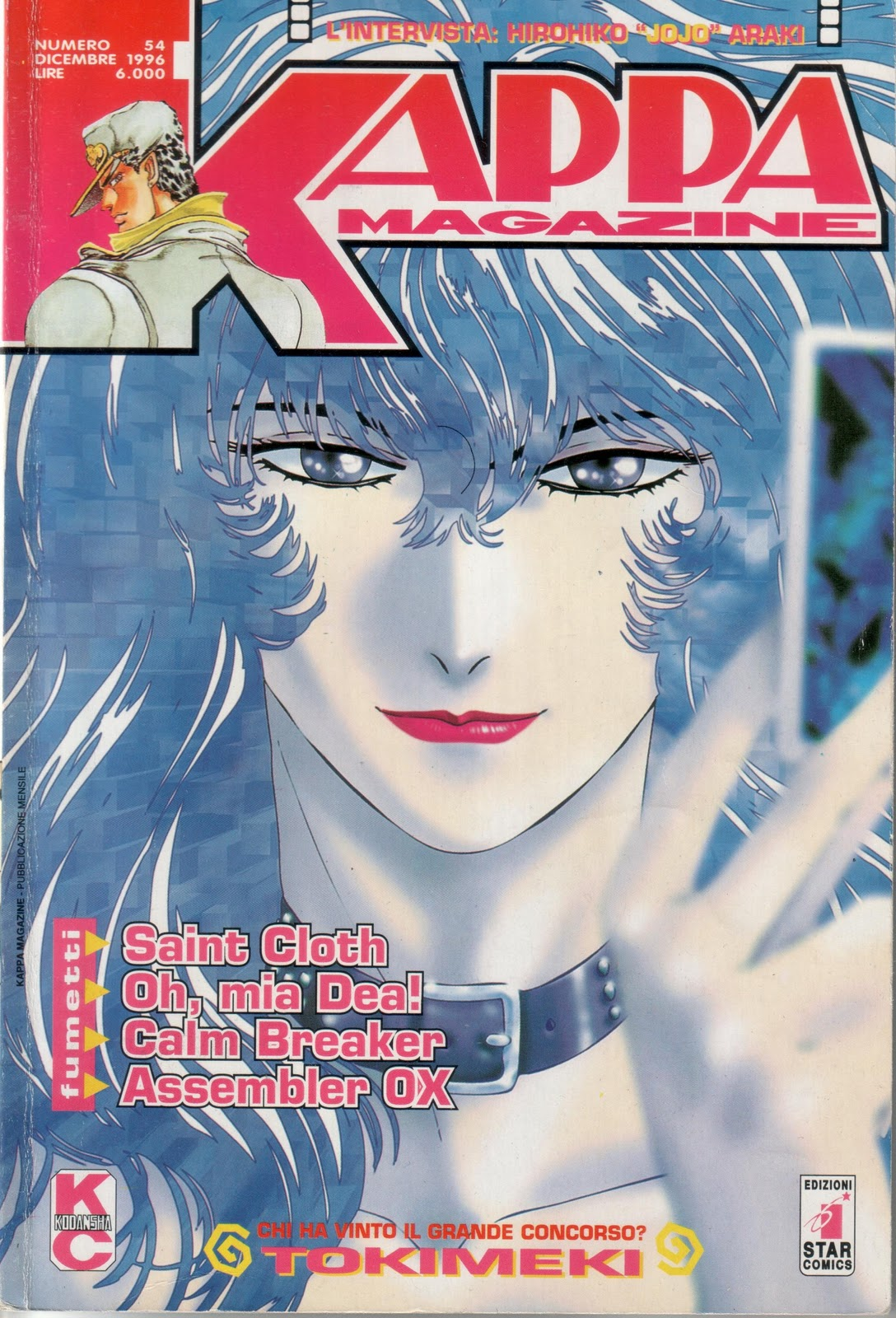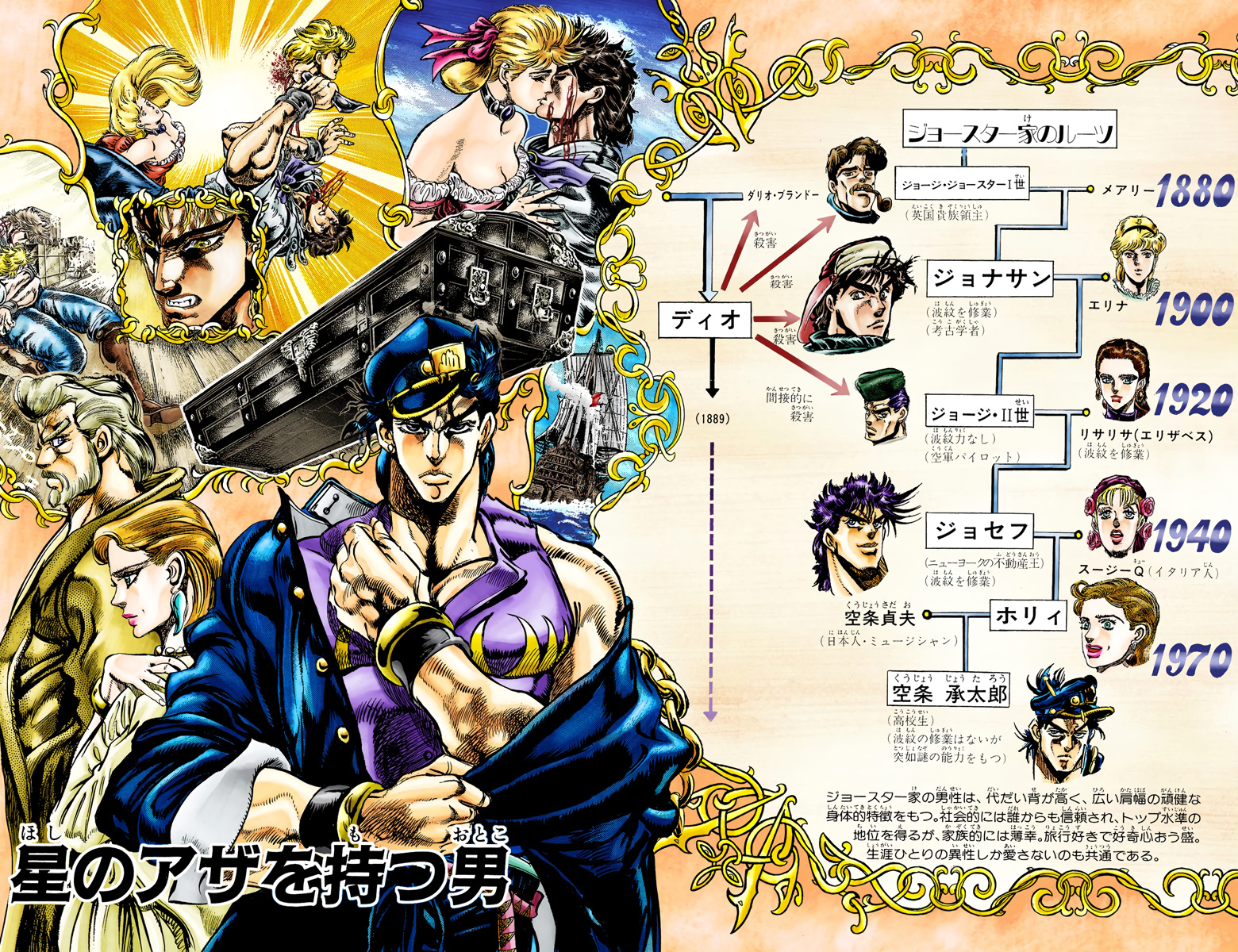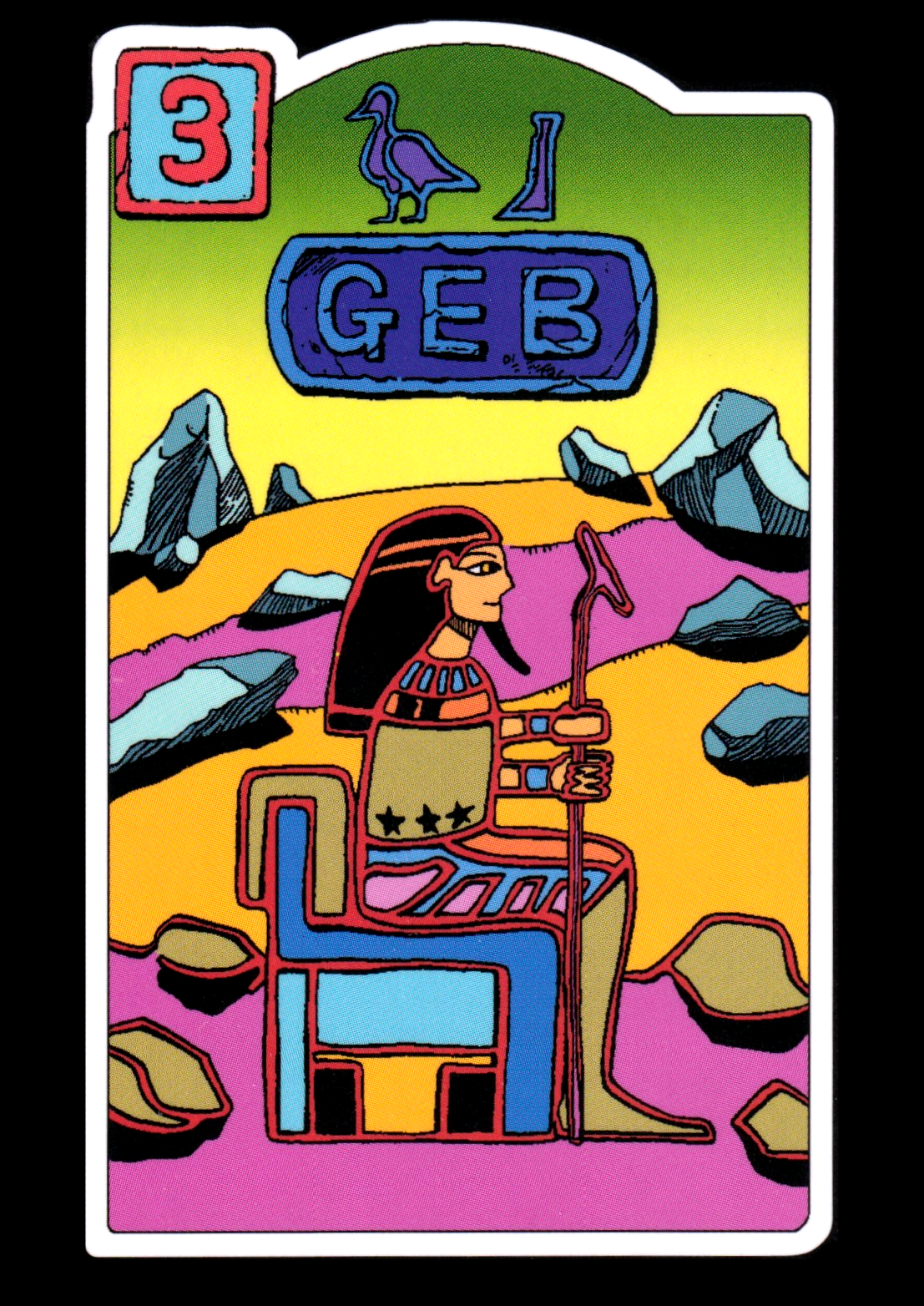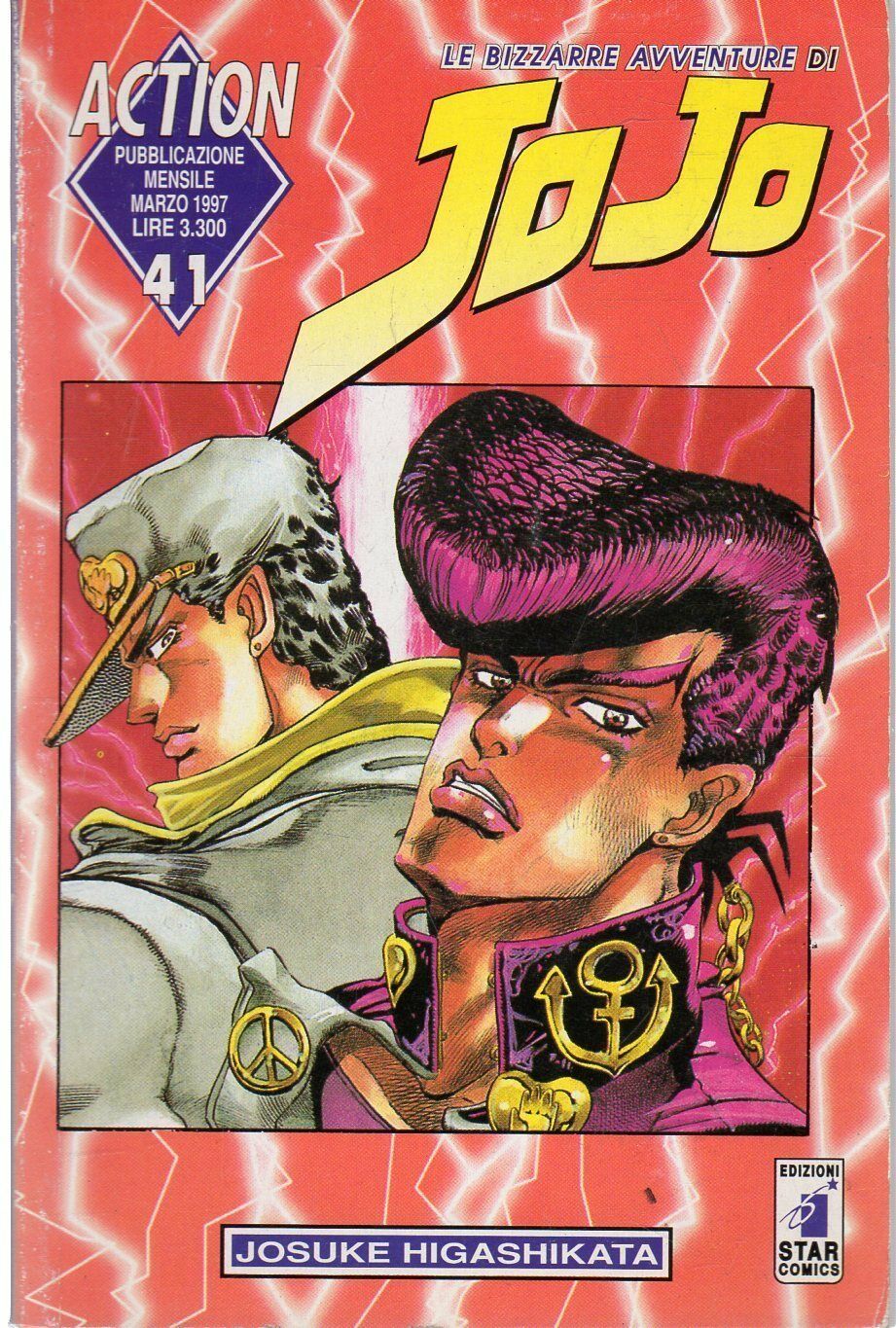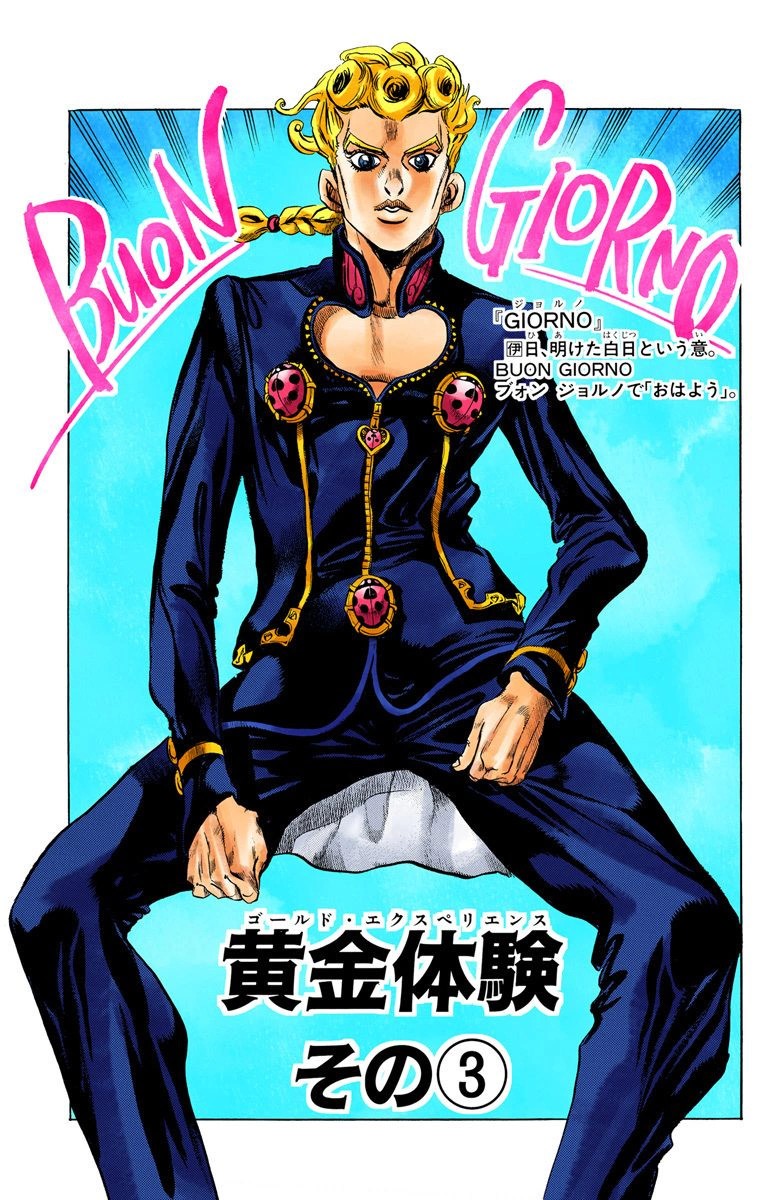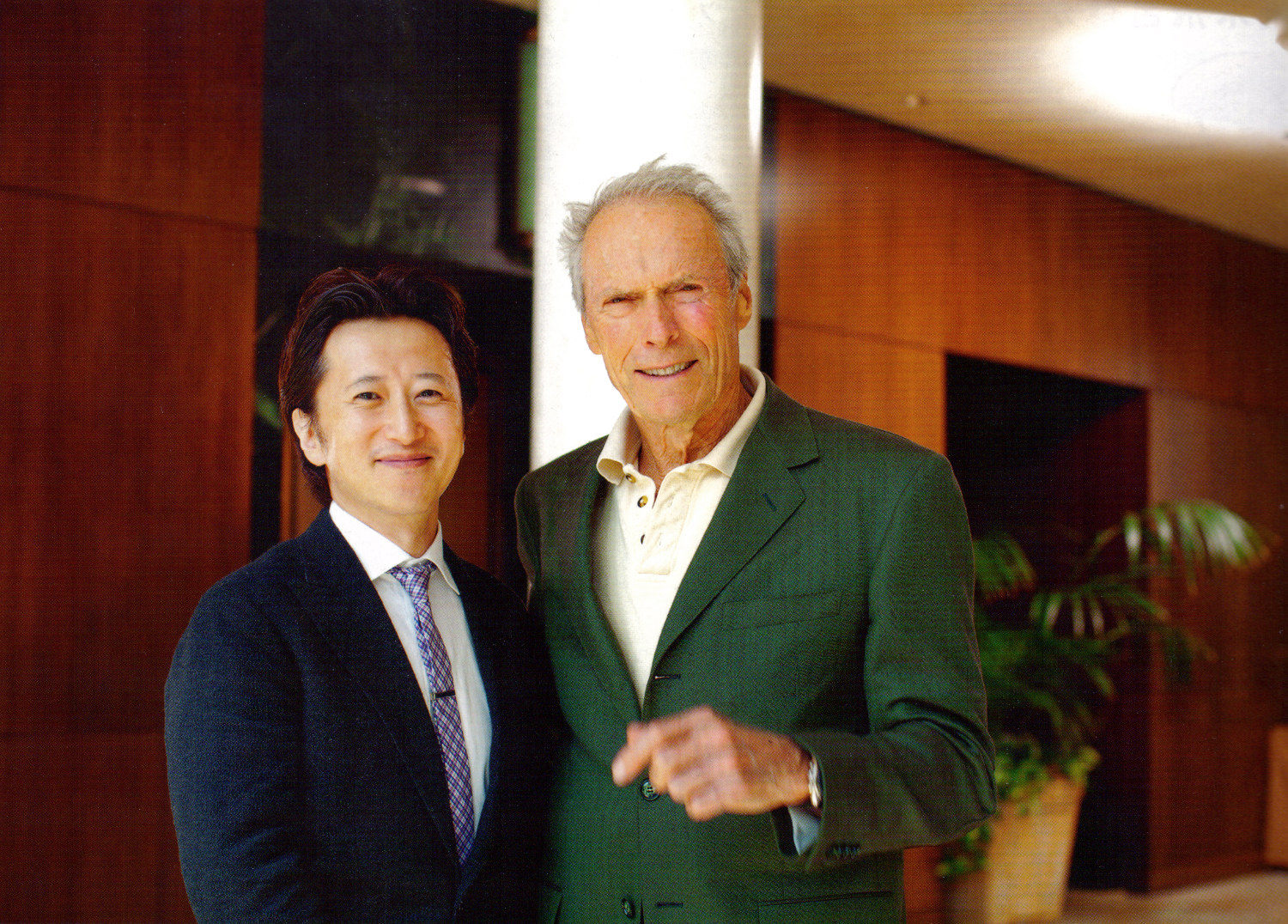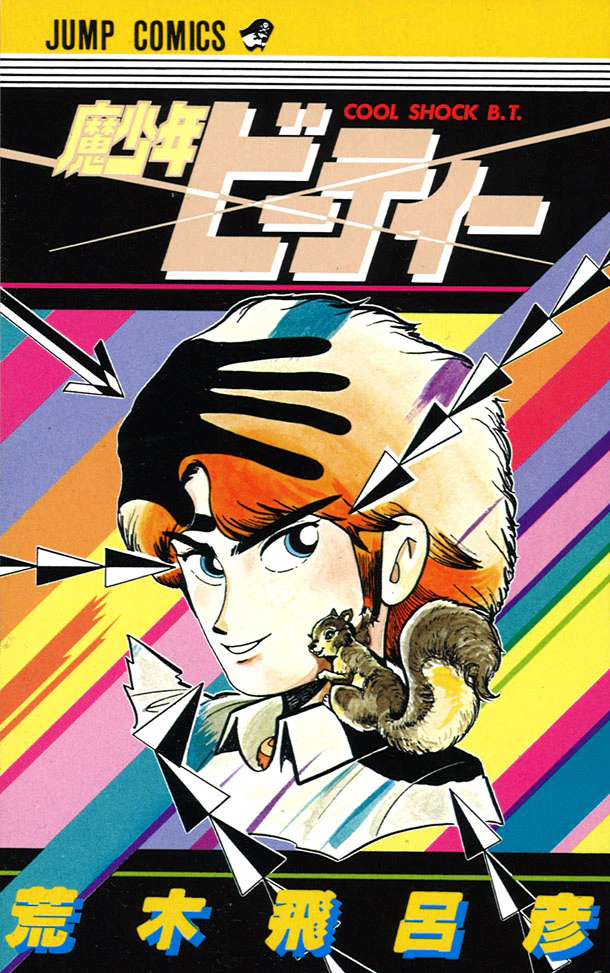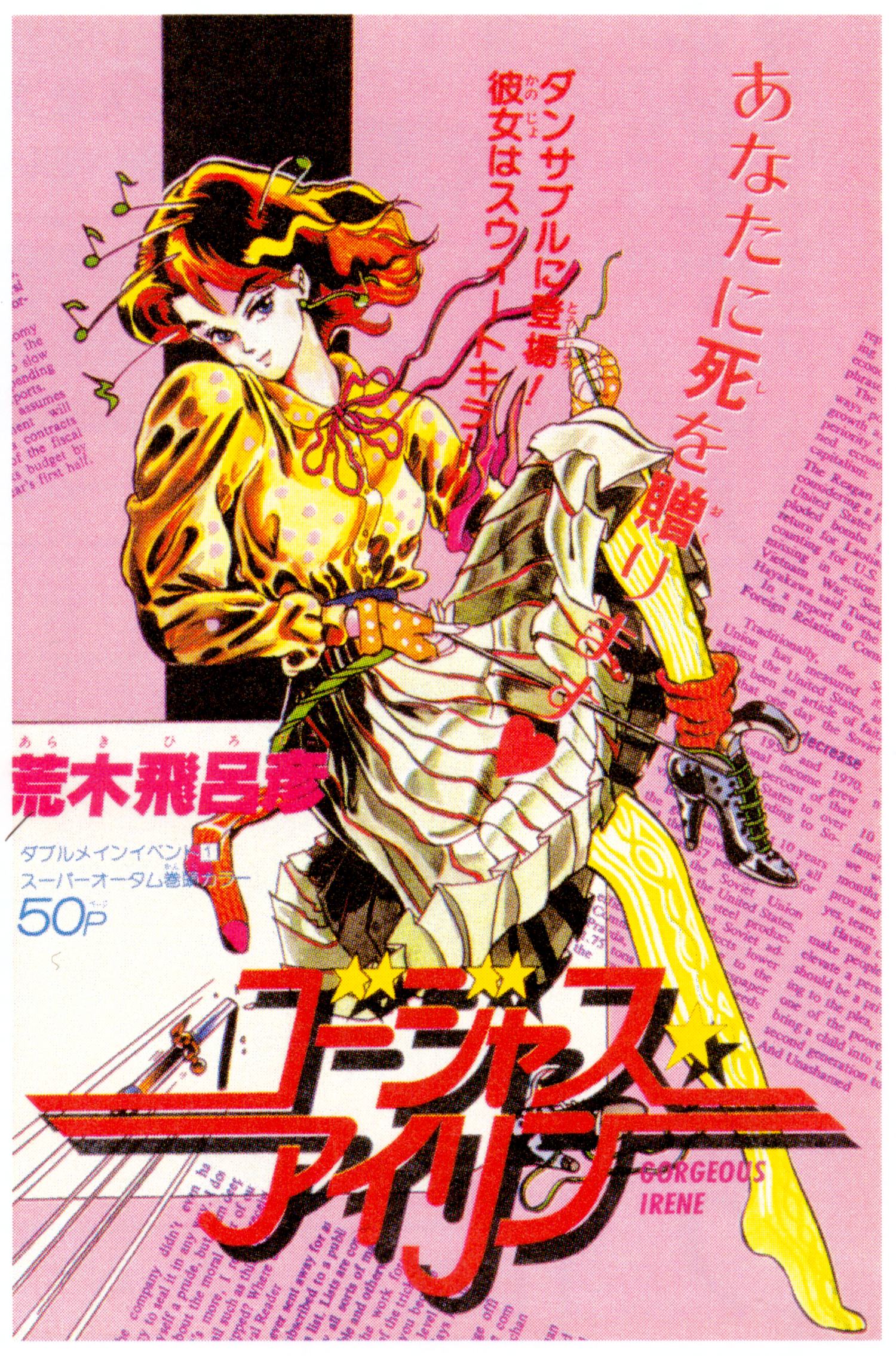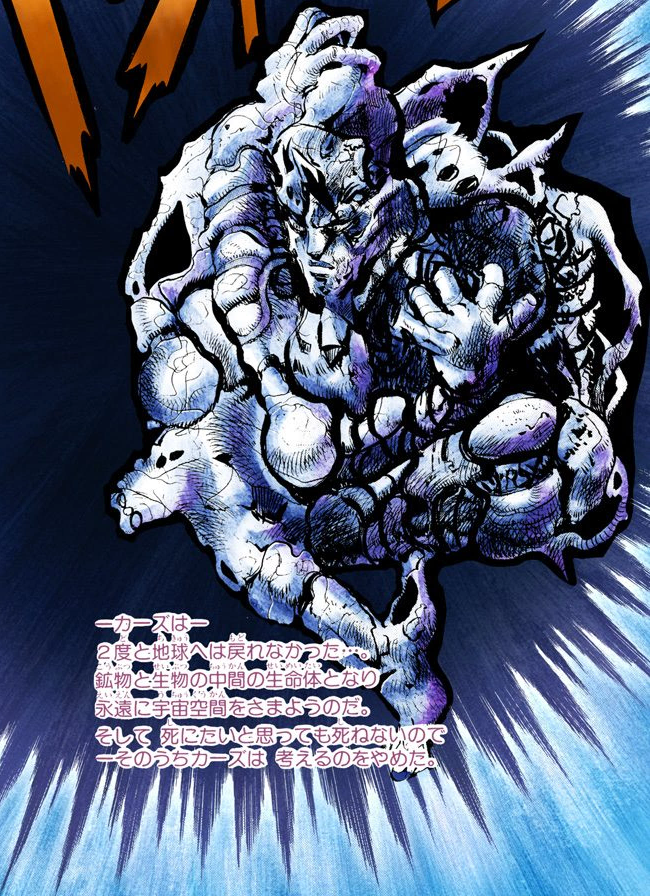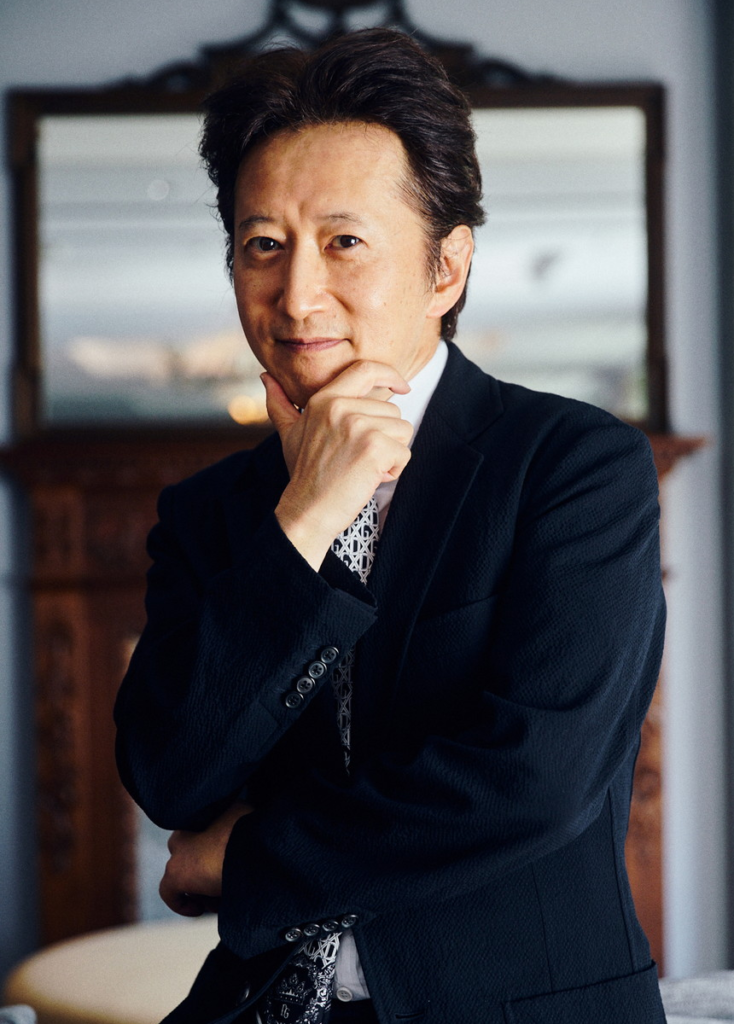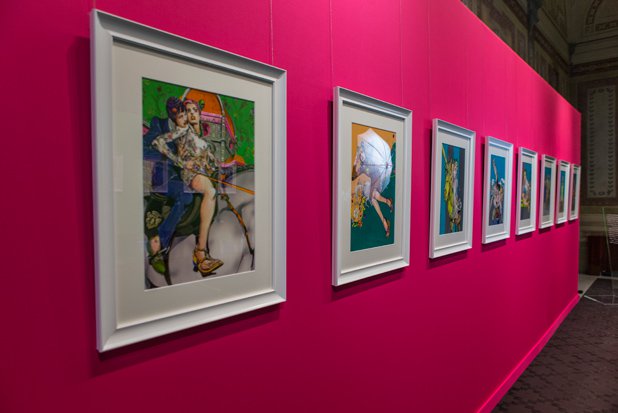About Kappa Magazine
Kappa Magazine is a former Italian monthly manga publishing magazine that ran from July 1992 to December 2006. Its publisher, Star Comics, is well known for publishing JoJo’s Bizarre Adventure within Italy. The magazine featured editorial columns on recent anime, as well as publishing new chapters for various popular manga series, such as Ghost in the Shell, Mobile Suit Gundam, Gunsmith Cats, Chobits, Compiler, Oh My Goddess!, and 3×3 Eyes.
The 54th issue contained a special interview between Kappa Magazine and manga author Hirohiko Araki. The interview talked in-depth about the creation of JoJo’s Bizarre Adventure, Araki’s biggest inspirations, and the origin of the series most iconic concepts.
It was published in December 1996, during the peak of JoJo’s popularity over in Italy, and is one of the earliest interviews featuring Araki outside of Japan. At the time of the interview, the fifth part of the manga was being serialized in Japan, and the fourth part was still on the way for Italian audiences.
“A Stand for a Friend” Full Interview
Before we start the interview – can you tell us a bit about yourself?
My name is Hirohiko Araki. I was born on June 7, 1960, in Sendai, Miyagi Prefecture.
Very good. Let’s start with JoJo, then. I think it’s safe to say that this series is the only “generational saga” to come from Japan. Was that your plan from the start?
Only partially. Let me explain: I originally only planned for the series to be three parts, ending with the final confrontation against Dio Brando. This meant that I was already aware of the fact that I would need to make three different JoJo’s, who would – in some sort of way – all be descendants of each other, and that their lives would be linked by a common curse.
Anyway, I have to say that the editors at the time weren’t keen on the idea of switching protagonists, especially for a popular series. If readers took the news badly, it could’ve ended in a total disaster. But I kept on insisting that we do it this way, mostly because I didn’t want to get bogged down drawing the same character for years, and because I wanted to progress the story through specific historical periods without resorting to gimmicks like time travel. Fortunately, I was right, and JoJo’s Bizarre Adventure has been continuing its success since 1987… Next year, we’ll be celebrating our 10th anniversary!
In addition to this revolutionary idea, other elements also proved key for JoJo’s success. Of course, we’re talking about the way characters fight, first using the Ripple and then Stands…
These elements were, however, only added later. I have to say that introducing two completely brand new fighting techniques has given the manga quite a particular twist: initially, it had been based almost exclusively on horror, mystery, and archeological investigations.
Fights always liven up a manga series, but I didn’t want to employ the same standards that everyone else was using. I was too engaged trying to make something completely new and unique. Someone suggested the idea of giving the protagonists ESP powers, but that didn’t sit well with me, and it had already been overused a dozen times. Readers might’ve got bored of it, and I didn’t want that. So I came up with a fighting style based on rhythmic breathing and Ripple Waves that, in an almost scientific way, gives the characters specific powers.
As for Stands, I wanted to put various concepts together, including the idea that an aura surrounds every living being, and Tarot card readings.
But there were only 22 Tarots, and at some point, the Stands started taking on inspirations from something else…
Exactly. I liked the idea a lot, so much so that I didn’t realize that the enemies…were coming to an end!
Each Tarot card gave a unique ability and character trait to each Stand, and it wasn’t like I could just make up new Major Arcana: so I had to resort to using the Egyptian gods. Suffice to say that initially only fifteen Stands were planned, while now we’re well past a hundred.
I’ve always tried to instill the characteristics of which country the user originated from into the visual design of every Stand, drawing inspiration from certain objects like books, dolls, and so on, without ever doing the obvious. Stands are always created in stages: first the abilities, then the shapes; subsequently, I throw all those parts together in order to create a Stand that has balanced aspects to its powers.
However, although the Stands are the main focal point, I have to say that I try to put a lot of care and effort into the creation and characterization of the human characters.
The third part of the series is currently being finalized in Italy. Without going into too much depth about the fifth part, which has just started in Japan, can you tell our readers what they can expect from the fourth part?
Josuke Higashikata‘s part is set in 1999, a very mysterious year because, besides it being the end of the century, it also marks the end of the second millennium. Mankind has always been afraid of certain dates, and to think that we’re so close to this transitional period was really quite astonishing to me: it’s a future not too distant, one that’s considered in the “present” and realistic… Something imminent and inevitable that’s about to happen to everyone.
In the JoJo saga, time plays a crucial role. Both as a leitmotif and as a conclusion to the first trilogy, time is the very framework within which the characters move. There are other topics I would’ve also liked to cover – one of them being the afterlife – but I fear that it’s too early for that right now.
Unlike the previous parts, where characters traveled around the world, the setting for the fourth part is a city. In fact, the city is hypothetical, not making it too ideal or completely unliveable. Morioh becomes more and more defined and real as the story progresses: it has the same problems a regular city would have, such as traffic, politics, waste disposal, and health care. Basically, a very complex setting helps to make the story more compelling and credible.
Jotaro Kujo and his group embarked on a long journey with a specific destination in mind, and at each turn their enemies continually attacked them in order to stop them. In this case, the enemies are all waiting to be discovered around a single urban location: if you think about it, this makes it a lot much harder to fight them…
In JoJo, there are various musical references, especially among the names of the opponents and Stands. But who do we owe the protagonist’s names to?
JoJo? To various foreign musicians who very few people know, but who I really like! The name of Kakyoin, on the other hand, is not a musical reference, but instead a reference to the place where I was born, Sendai.
Music has always accompanied me during the creation of my manga: I owe a lot to Chicago, Yes, Led Zeppelin, Jackson Browne, Bob Dylan, and almost all the musicians from the ’60s and ’70s. I also really like Prince, and I still follow him to this day.
I’ve always been short on money, and in order to listen to music, I had to “grab” the songs using an old and battered cassette recorder, by putting the microphone close to the radio speaker. I didn’t have a stereo, and since records were too expensive for my pocket change, I had to make do with it…
As for Japanese music, to tell the truth: I’ve hardly ever followed any Japanese musicians in my life.
Going back to the names of the protagonists, everything matches up to the third part: Jonathan Joestar, Joseph Joestar, Jotaro Kujo … But in the fourth part, we have Josuke Higashikata, who only has one “Jo”. What’s up with that?
With the fourth part I wanted to experiment with the narrative, and so I tried to make the names more “playful”. Of course, in the West, it is almost impossible to understand why Josuke’s nickname is JoJo and not – for example – JoHi, but it’s actually very simple: both ideograms that makeup Josuke’s name can be read as “Jo”. I chose the name on purpose because once it was written in kanji, any Japanese reader would be able to understand the play on words.
I’m sorry to my Italian readers, but at least I fixed that with the fifth part.
All right, so let’s talk briefly about the fifth part. It’s set in Italy and the main protagonist is Giorno Giovanna…
Right. And since the short-form “GioGio” is pronounced exactly like JoJo, it all comes together: I asked Shueisha to change the cover too, and now in the bottom strip it shows GIOGIO instead of JOJO like it did previously.
Anyway, it’d be better to call him Giorno Giovanna, since he’s not a…
Woah! Let’s not reveal too much information to our Italian readers! They’ll be able to read it for themselves in due time, so generally, we don’t want to give anything away in advance.
Sounds good to me. I didn’t take into account the fact that the series is being published ahead in Japan, so some of the secrets that have already been revealed to us aren’t for Italy…
Let’s talk about you as an author. When and how was your passion for manga brought about?
Well, as a boy, I was literally devouring films and manga, which became part of my worldview.
I started drawing at the age of seven, copying the works of Tetsuya Chiba (Ashita no Joe) and Sanpei Shirato (Ninja Kamui). More than anything I was a fan of samurai manga, and I loved Kazuo Umezu‘s horror. Oh yeah, I was also a huge Tiger Mask fan! When I started drawing manga as an amateur, I used Mitsuteru Yokoyama, author of Tetsujin 28, and Babel II, as a basis, along with Ikki Kajiwara, author Tiger Mask.
I was, by all means, a very calm child, and while my peers were busy with their passion for RC model planes, I took refuge in films and manga. To think that when the first issue of Weekly Shonen Jump magazine came out, I was right there to buy and read it.
Who would have thought that my manga would be published in the same magazine, and for decades consecutively?
You said that cinema is also one of your sources of inspiration?
Especially cinema. To be honest, I owe everything to the great Italian director Sergio Leone and his “spaghetti westerns” with Clint Eastwood. My father had an inordinate passion for those films and characters, and I watched them with him. Too bad my dad can’t understand my manga!
I was also a huge Godzilla fan and went crazy for The Poseidon Adventure, although unfortunately, I couldn’t go to the movies too often due to very low ‘funds’.
Another thing that interested me a lot was the illusionists and magicians. I practice with cards like them, and I became quite good at it. Sports, on the other hand, didn’t have much influence: I wasn’t too fond of team sports, so I went to a kendo gym for a while.
What about your characters’ iconic clothing?
The clothes and many of the objects used by my characters are copied directly from the French and Italian fashion catalogs, especially those of Versace and Moschino. They’re very imaginative, of course, but for this reason, after a while, I get tired of drawing them on them, and I try to make some changes. Then again, that’s fashion.
For Jotaro’s school uniform, however, it’s a different matter. As I said earlier, one of my favorite characters has always been the protagonist of “Babel II“, who, as many will remember, wandered around the desert dressed just like that. Very bizarre. And very JoJo-esque, if I must say.
Are there any of the characters you created that you prefer?
At the top of the ranking, I would put Josuke, Jotaro, Dio, D’Arby, and N’Doul on an equal footing; However, the worst, I think is Vanilla Ice: I couldn’t stand the idea of having to draw him!
What did you do when you decided to draw manga not just for fun?
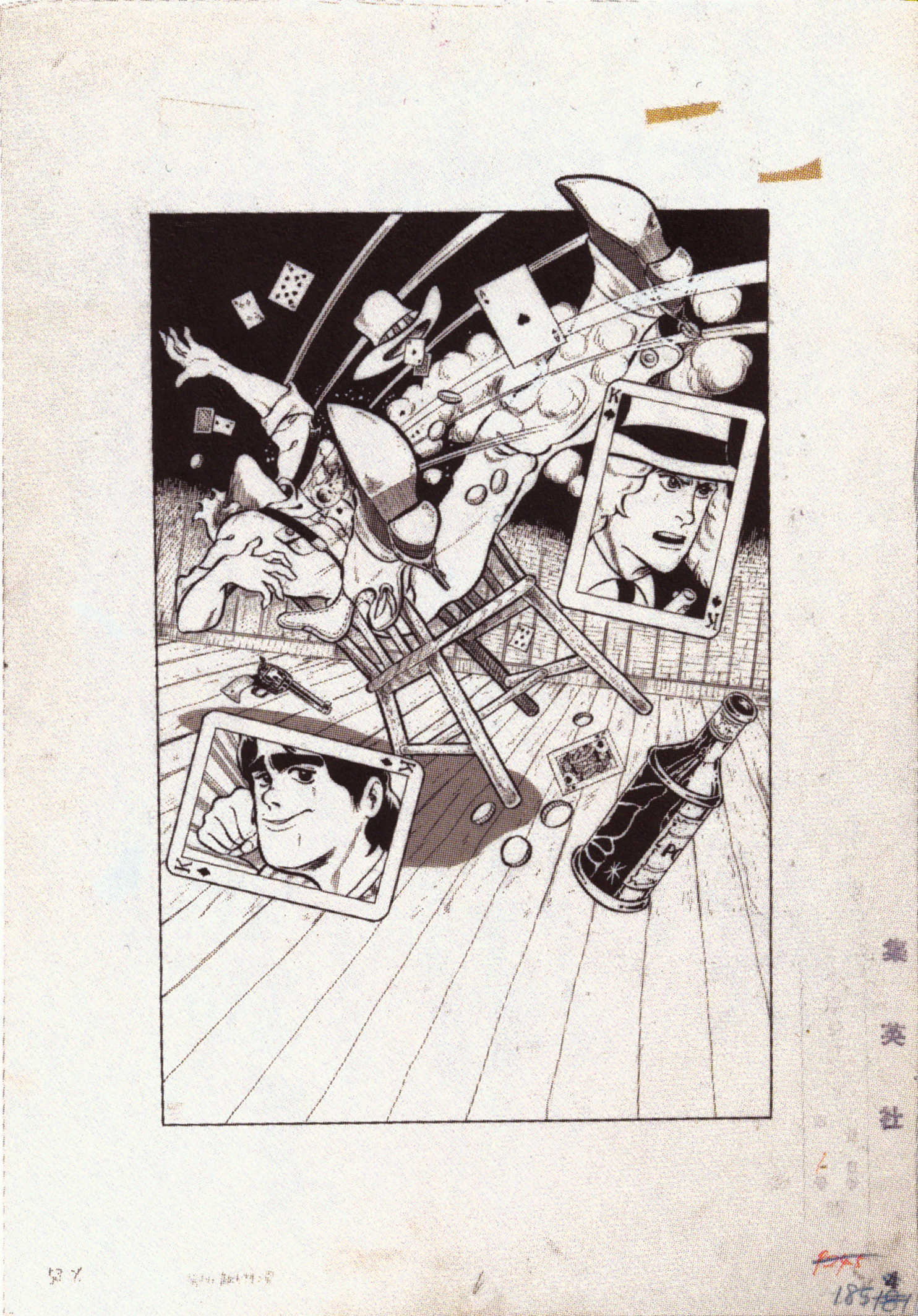
I tried to keep it all under wraps because – unlike what people in the West think – even in Japan, comics/manga aren’t that respectable, despite the very high sales. I’ve always avoided drawing doujins, but on the other hand, I attended a drawing school.
During the course, I drew two western stories and two science fiction stories, which I entered into the Tezuka Awards without the slightest chance of winning. In fact, I was still very immature, but my enthusiasm (as happens to many young people today) prevented me from realizing it. And so it happened again: I left for Tokyo all proud of the new manga I had drawn, but as soon as I submitted it to an editor, he found a mistake on the first page and refused to even read the rest.
At that moment, I realized that the road to becoming a manga artist wasn’t an easy path, and I made my first serious commitment. In four months, I completed a thirty-page story (Poker Under Arms) that I submitted to the subsequent Tezuka Awards, which finally made it into the charts and was published in “Shonen Jump”.
And from that moment, everything changed …
That’s right. Then began a period of hard work, but I was very motivated. I went back to Sendai to work on the western Outlaw Man, and the sci-fi Say Hi to Virginia. My first real series, however, was Cool Shock B.T., and it was thanks to it that I began to understand what it meant to work with fixed deadlines and schedules.
I used to send my manuscripts by courier and talk on the phone with the publisher, who often asked me to come to Tokyo the next day to make corrections in the Shueisha graphics studio without sleeping until the next morning.
With the beginning of Baoh the Visitor I had moved to Tokyo. It was the summer of 1984, and the term ‘biotechnology’ had just begun to appear frequently in the papers and in people’s vernacular; on this wave I created ‘Baoh’, which phonetically is very similar to the English pronunciation of ‘bio’, to which I combined elements referencing the growing success of hypermuscular characters like Rambo. This series was quite successful, and so I could afford my first trip abroad, to England. Unfortunately, not knowing English and being of purely Japanese culinary tastes, it all proved a bit difficult.
Then it was turn for Gorgeous Irene, which didn’t go on very long because female main characters never work out well for me. That’s also why not many girls appear in JoJo, and to my readers: I swear I’m still working on it, and I can’t promise that the next new main character of mine (in a new series) will be a woman in the future.
Next, I was struck by Nikola Tesla, a man who really existed, thanks to a book I had read about him. Such a strange yet brilliant character, on which I immediately decided to work on.
Tell us about the steps you take to create a manga chapter.
It all starts with a twelve-hour session dedicated to making storyboards to show to the editor. After it’s approved, I move on to penciling the manuscript. To effectively distribute the workload of my five assistants:
- On Sunday I create the storyboards and framing;
- From Monday to Wednesday, from 11am to midnight we work hard, with an hour and a half break for lunch;
- By 6pm on Thursday, if there are no hiccups, the chapter is complete, including inking, and until midnight I think about ideas for the following week;
- Friday and Saturday are usually dedicated to coloring illustrations or information gathering. During these days I spend a lot of my time giving out tasks to my assistants, so I can concentrate and keep working after 8pm by myself.
With a schedule like that, order is vital, or there’s a risk of missing the deadline… And then there’s trouble!
One last thing, before we say goodbye. Many of our readers are clamoring for the return of “retired” characters, such as Santana or (especially) Kars. Will we ever see them again?
No, for the simple reason that I consider their chapters closed. Their story ended with the last panel in which they appeared. I know that Kars was sent into space like a meteorite, and could return, but – as the caption told – his mind was reduced to the stage where it ceased to think. And I’m not going to resurrect a dead character. I was also asked to make a follow-up to Baoh, but the ending is final and will always remain the same. I’m sorry…
Do you have a farewell message for your readers?
Right now I consider my Italian audience very important for judging my work, precisely because the fifth series of JoJo is set (at least for now) in your country. Keep reading, and I promise I’ll make your beautiful land shine!
Translation by Morgan (JoJo’s Bizarre Encyclopedia)
Source: Kappa Magazine – Internet Archive
About Hirohiko Araki
JoJo’s Bizarre Adventure was written by award-winning Japanese manga artist Hirohiko Araki. It has been in serialization for nearly 35 years since January 1987. It’s divided into eight parts, with the ninth part just announced.
Araki has had many run-ins with Italy, even collaborating with Italian fashion company GUCCI for manga and exhibits. On January 3, 2013, Araki held an art exhibition in Florence, Italy for the one-shot “Jolyne, Fly High with GUCCI”, featuring Jolyne Cujoh and Bruno Bucciarati.
©LUCKY LAND COMMUNICATIONS/SHUEISHA Inc.
